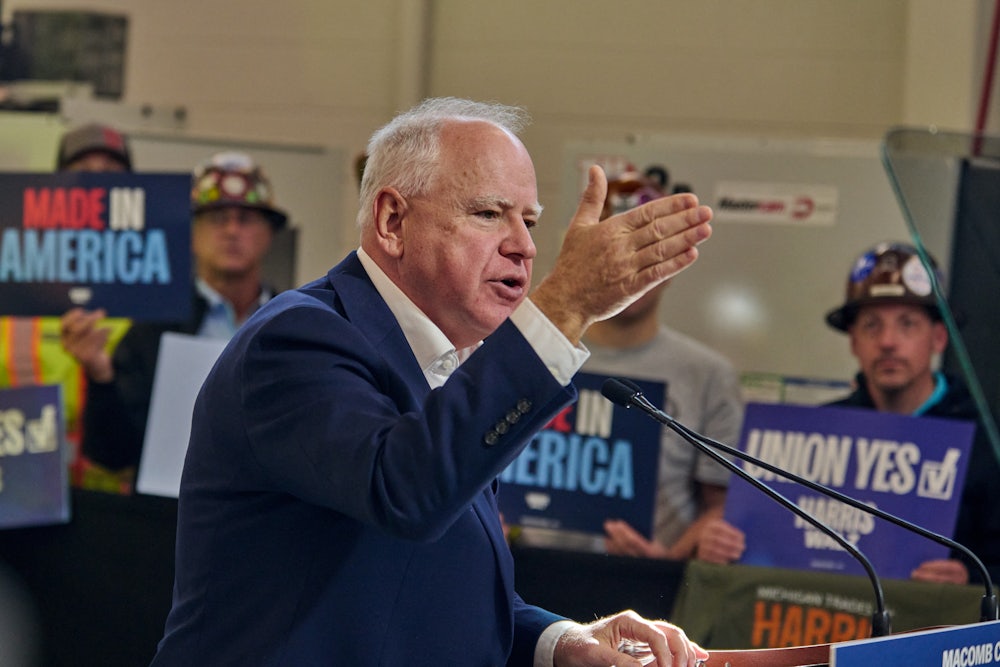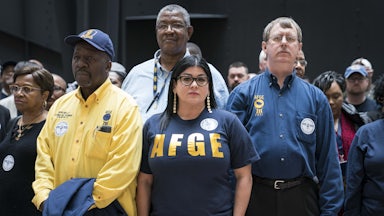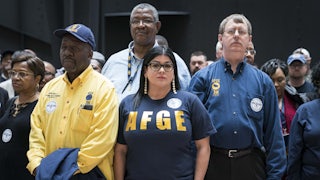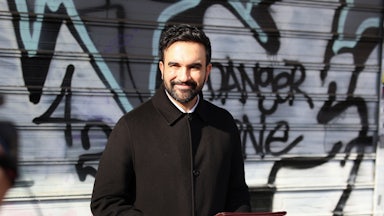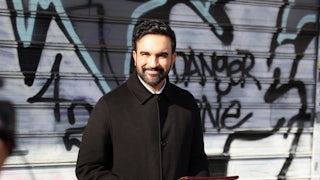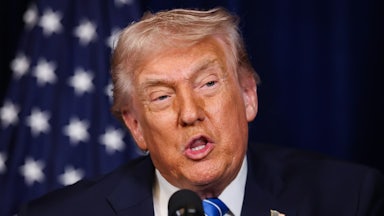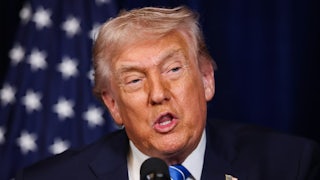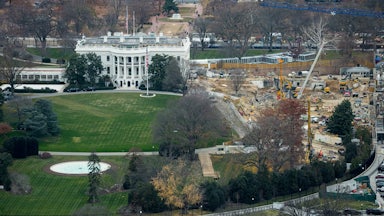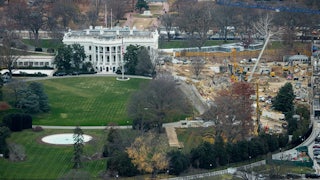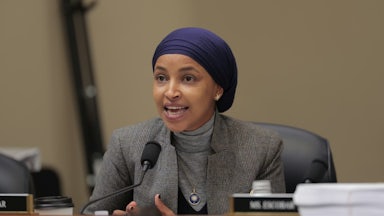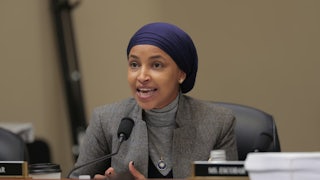I’m as delighted as the next guy that the MAGA cult is tearing itself apart over an Epstein client list that probably doesn’t exist. But only about half of all Republicans identify as MAGA, and within the entire voting population it’s more like 20 percent. The Trump constituency that interests me is his working-class supporters, of which MAGA is but a subset. Now, some fresh research suggests this critical group of voters is more liberal than you think.
A new report by the nonprofit Center for Working Class Politics, published today in Jacobin, suggests that about 20 percent of working-class voters who supported Donald Trump in 2020 support left-leaning economic policies such as imposing a millionaire tax, raising the $7.25 hourly minimum wage, and increasing spending on Social Security and public schools. Indeed, working-class voters overall hold some economic views that are further left than those of the Brahmin left that’s forever despairing of the proletariat’s reactionary politics. “While these economically progressive Trump voters hardly represent a MAGA majority,” the authors write, “they represent a meaningful slice of the electorate (5 percent) that could easily tip elections in key working-class-heavy swing states” in the 2026 midterms and the 2028 presidential election.
Looking at American political history over the past decade, it’s tempting to conclude that the electorate—and especially the working class that represents 57 percent of it, according to 2024 exit polls—has gotten more conservative. (I’m defining “working class” here conventionally as those who lack a college degree.) After all, this country elected Trump president twice. But according to the Center for Working Class Politics survey, when you compare political attitudes during the period from 1990 through 2007 and the period from 2008 to 2022, you find that working-class Americans moved leftward on economic and social issues, with the biggest leftward shift since 2007 on immigration and civil rights—Trump’s two biggest bugbears. (The survey defines “working class” as those lacking a college degree but also excludes any who are situated in the top one-third of the income distribution.)
The reason nobody noticed the working class’s leftward shift was that it was dwarfed by a much bigger leftward shift among middle- and upper-class Americans. Thus, relative to these groups, a leftward shift by the working class registers as a growing gap, with the working class ever more conservative than the middle and upper classes. Paradoxically, “the same working-class coalition that elected Obama is now likely even more progressive than it was eighteen years ago.” But it’s also more alienated from the college graduates whose views have changed more rapidly, and who dominate the Democratic Party more than they did in 2008. The biggest gap, unsurprisingly, is on immigration, with “social norms” (i.e., wokeism) coming in second.
What does this mean in practice? On the one hand, you’ve got a working class that can’t stand being lectured to on social issues by the Brahmin left. But on the other hand, that lecturing is changing minds. More than 75 percent of working-class people think gay couples ought to be permitted to adopt, and 56 percent think there’s too much anti-trans discrimination. It’s quite possible that the Brahmin left’s perceived condescension so infuriates the working class that it pulls the lever for Trump—and that the Brahmin left’s arguments nonetheless persuade the working class to be more tolerant of gender difference. But that wouldn’t be true across the board. The gap between the working class and the middle and upper classes on guns, for instance, is unchanged (though the working class has always been more favorably disposed toward gun control than is generally supposed).
On economic issues, the survey divides “predistribution” from “redistribution.” Predistribution concerns ways to make the economy more egalitarian, while redistribution concerns ways to even things up after the economy botches the job. Protections for union organizers, a higher minimum wage, trade protections, and government job creation are predistributive. Income taxes, welfare, government-funded health insurance, and Social Security are redistributive. The working class is more favorably disposed than the middle or upper classes toward predistribution and less favorably disposed toward redistribution. But it’s strongly supportive of both.
On predistribution, the working class has always stood further left than the middle and upper classes. That gap has been shrinking since 2008, not because the working class is changing its view but rather because the middle and upper classes are catching up. On matters like the value of union organizing, it’s the proletariat that has been lecturing to the Brahmin left, and the message is starting to get across. The dynamic is similar with redistribution, except that in this instance the middle and upper classes not only caught up with the working class but surpassed it in supporting, for instance, higher taxes on the wealthy and more government spending on health care.
The working class, meanwhile, more strongly supports Medicare and Social Security. On welfare, the survey found, working-class attitudes were all over the map, depending on how the question was posed: 82.1 percent agreed we spend too little on the poor, but only about half said the government should help the poor—and when the question included the word “welfare,” support dropped as low as 24 percent. That helps explain why Republicans imposed a job requirement on Medicaid recipients; it makes them look like recipients of welfare, when in fact they’re recipients of health care services that even the rich can’t usually afford to pay for out of pocket.
To woo Trump’s working-class voters, obviously, the trick for Democrats is to base an appeal on economic issues. But the survey suggests a substantial portion of that theoretically gettable 20 percent of Trump voters isn’t actually gettable because it’s too socially conservative. Weeding out that group, the survey finds, conservatively, that about 10 percent of working-class Trump voters are gettable. That translates into 2.5 percent of all voters, which doesn’t sound like a lot, but it “exceeds the margin by which Harris lost both the national popular vote as well as several key swing states.”
What does that mean in practice? Don’t canvass in gun clubs. Emphasize predistribution policies over redistribution policies. Predistribution is actually more “radical,” in that it requires the government to reshape the economy rather than clean up after its mess, as redistribution does. Also, emphasize universal programs like Social Security, Medicare, and Obamacare over means-tested programs like cash welfare and food stamps.
Medicaid occupies a gray zone in between, which helps explain why voters strongly support it but haven’t yet objected to the new work requirement (because they haven’t yet figured out that it’s a strategy to shrink enrollment). That naïve view of the work requirement will, I think, change well before the requirement takes effect (after the 2026 midterms). Above all, avoid divisive social issues. The working class is moving in a more broad-minded direction, but it’s moving more slowly, and it doesn’t want to be nagged. In the meantime, the Brahmin left should continue to follow the working class’s lead on pocketbook issues, because that’s how Democrats win.
